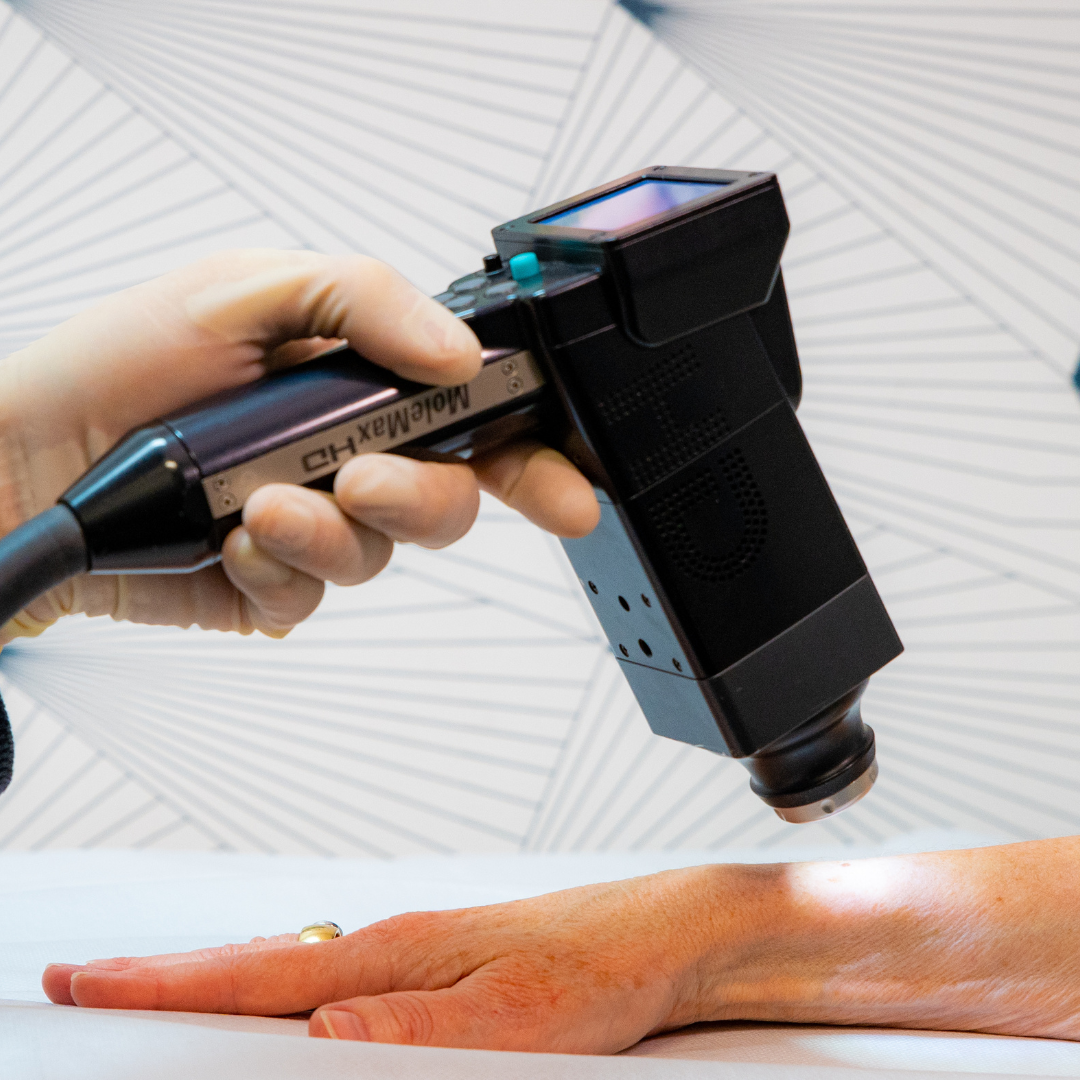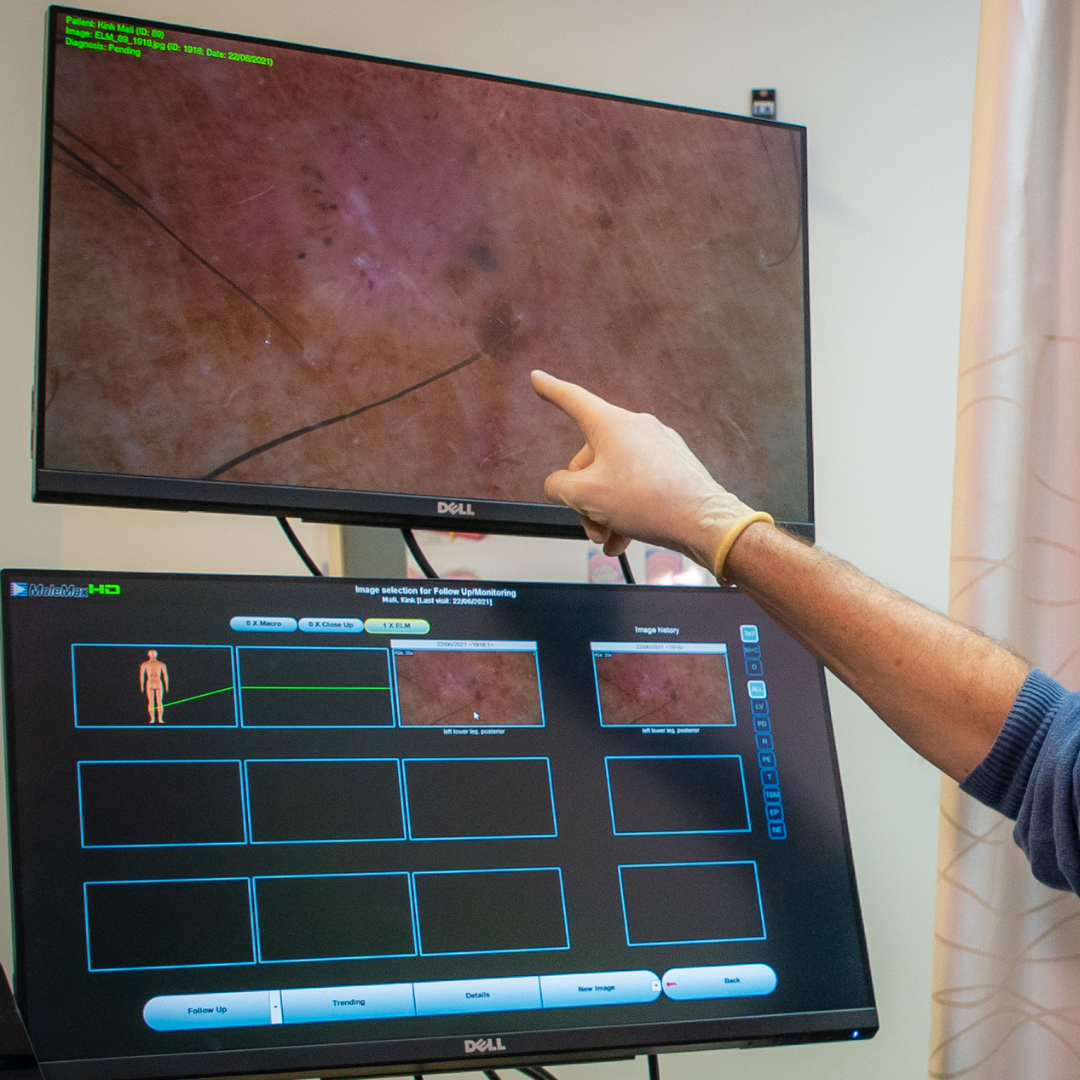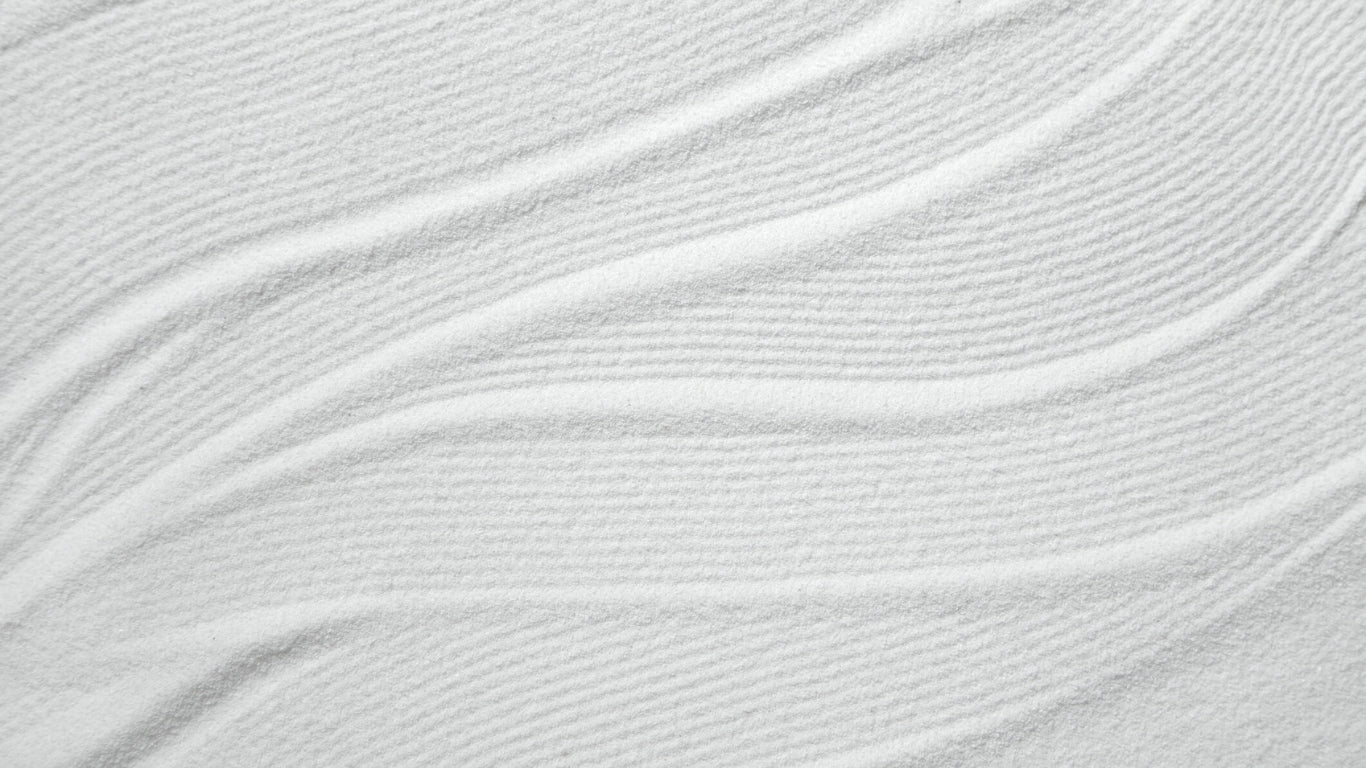
MOLE MAPPING
Advanced Digital Tracking for Early Skin Cancer Detection
Mole mapping is a non-invasive, digital imaging method that systematically records and monitors moles, freckles, and skin lesions. By capturing high-resolution images of your skin, mole mapping allows doctors to track subtle changes over time, helping to detect melanoma and other skin cancers in their earliest stages.
TREATMENT PROCESS
1. Consultation
2. Full-Body Imaging
3. Mole Mapping & Data Storage
4. Expert Review
Your doctor will begin with a short consultation to assess your skin cancer risk, discuss your medical history, and explain how total body photography fits into your ongoing skin health plan.
You’ll be guided to a private imaging room where we use advanced digital photography technology to take high-resolution images of your entire body, capturing all visible moles and lesions. Underwear remains on for your comfort.
Each mole is mapped and recorded using sophisticated software that allows for easy tracking and comparison over time. This process helps identify even the smallest changes that may indicate early melanoma or other skin concerns.
Your images are reviewed by one of our experienced skin cancer doctors, led by Dr Amarnath Bhat. We’ll compare current images with past records (if applicable) and recommend next steps if any changes are detected.




What is Mole Mapping?
Mole mapping is a non-invasive, digital imaging method that systematically records and monitors moles, freckles, and skin lesions. By capturing high-resolution images of your skin, mole mapping allows doctors to track subtle changes over time, helping to detect melanoma and other skin cancers in their earliest stages.
Skin Monitoring & Prevention
Why Mole Mapping is Important
- Tracks small changes in moles that may indicate early signs of skin cancer.
- Reduces unnecessary biopsies by providing a detailed visual comparison over time.
- Essential for individuals with multiple or irregular moles, fair skin, or a personal/family history of melanoma.
Who Should Have Mole Mapping?
- Those with many moles or atypical (irregular) moles.
- Individuals with a history of sunburns, excessive sun exposure, or fair skin.
- Patients with a personal or family history of melanoma or skin cancer.
How Often Should You Get Mole Mapping?
- Every 6-12 months for high-risk individuals.
- As recommended by your skin cancer specialist, depending on your personal risk factors.
What is mole mapping?
Mole mapping is a high-resolution digital imaging technique that records your moles and skin lesions to detect subtle changes over time.
How does mole mapping help detect skin cancer?
By comparing images from previous visits, doctors can identify new or changing moles, which may be an early sign of melanoma or other skin cancers.
Who needs mole mapping?
Mole mapping is recommended for individuals with multiple moles, fair skin, a history of sunburns, or a family history of melanoma.
Is mole mapping painful?
No, mole mapping is completely non-invasive and painless.
How often should I have mole mapping?
High-risk patients should have it every 6-12 months, while others may require less frequent monitoring based on their doctor’s recommendation.
Does mole mapping replace a biopsy?
No, if a mole appears suspicious, a biopsy is still required to confirm whether it is cancerous.
How long does the procedure take?
A full-body mole mapping session takes about 30-45 minutes.
Will I need to undress for mole mapping?
Yes, most of the body needs to be visible for comprehensive imaging, but underwear can remain on.
Can mole mapping detect melanoma before symptoms appear?
Yes, digital imaging allows doctors to detect very early changes, increasing the chances of early diagnosis and successful treatment.
Can I do mole mapping if I have no history of skin cancer?
Yes, mole mapping is useful for anyone who wants to monitor their skin health proactively, even without a history of skin cancer.
Is mole mapping safe during pregnancy?
Yes, it is completely safe and can help track hormonal skin changes that occur during pregnancy.
Is mole mapping covered by Medicare?
Some aspects may be covered, but check with your provider regarding costs and rebates.
What happens if a mole change is detected?
Your doctor will recommend further tests, such as a biopsy or dermoscopic imaging, to assess whether the mole is cancerous.
Can I track the images myself?
No, mole mapping requires expert review by trained skin cancer specialists to ensure accuracy.




